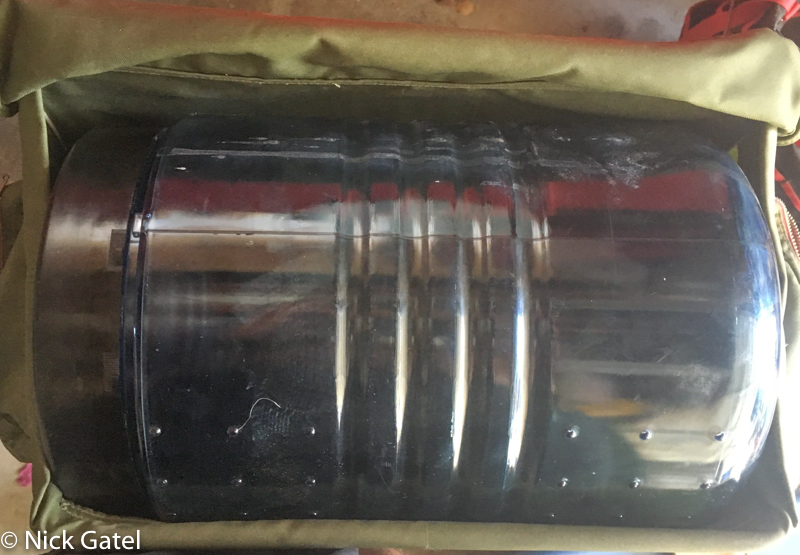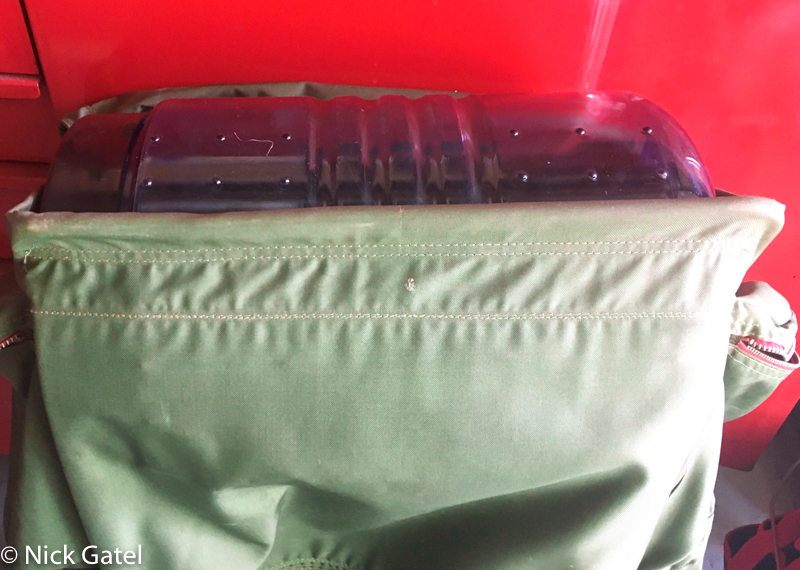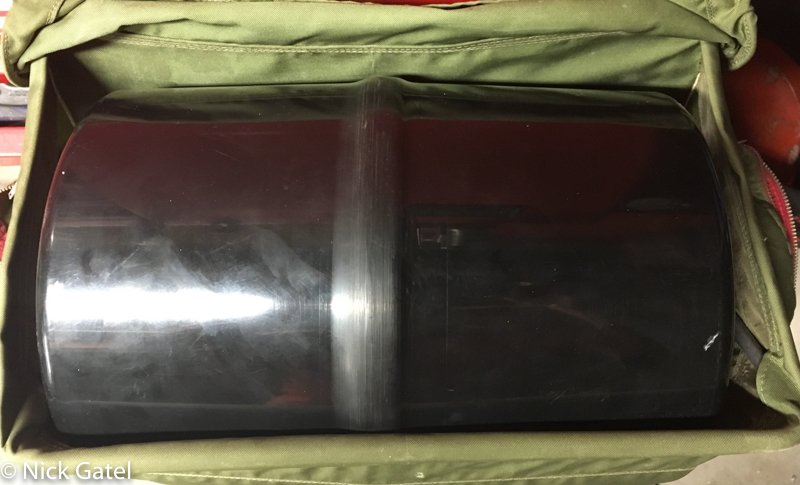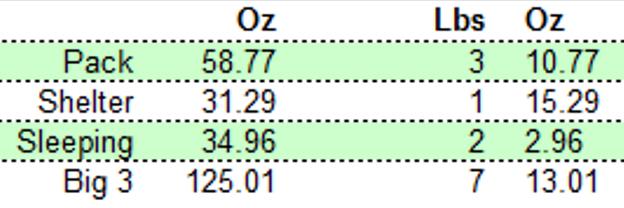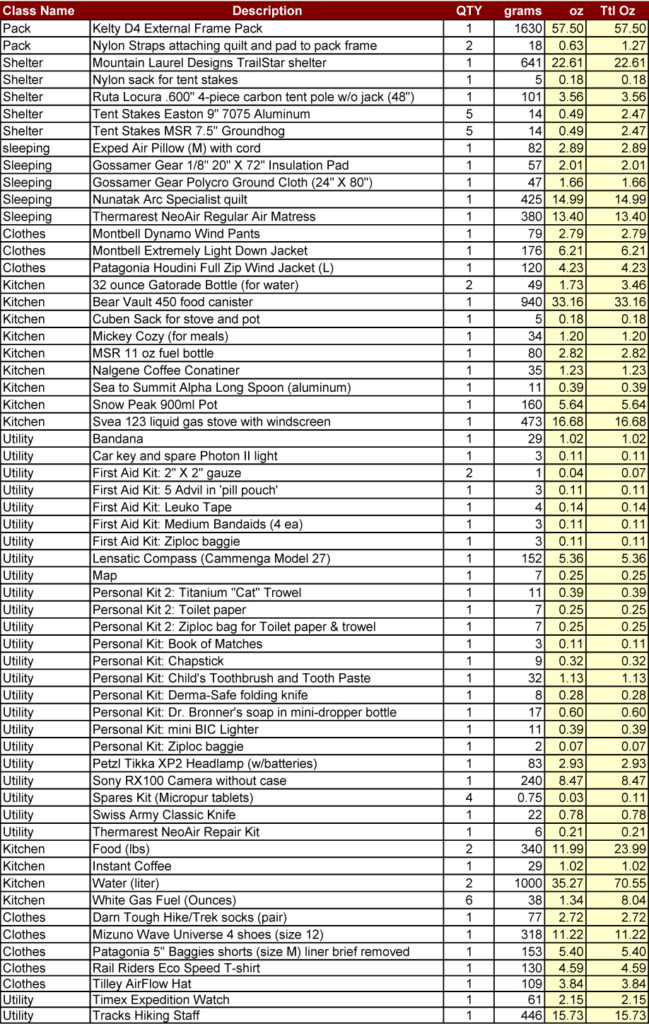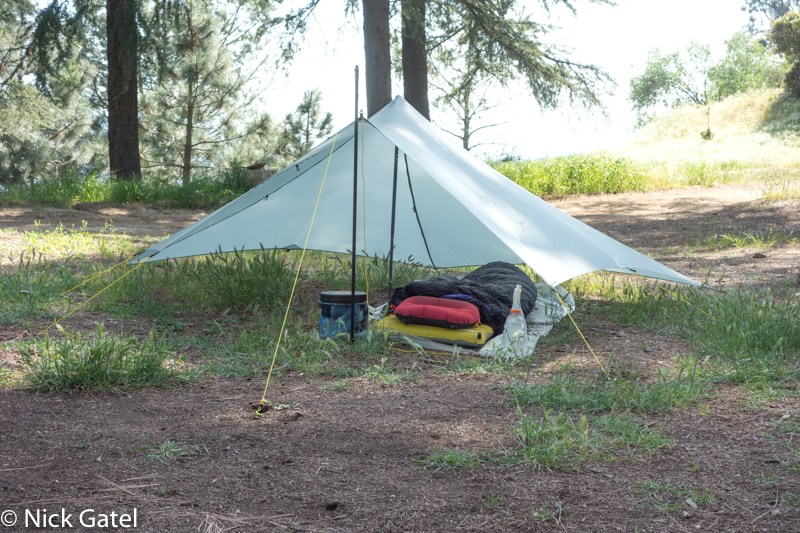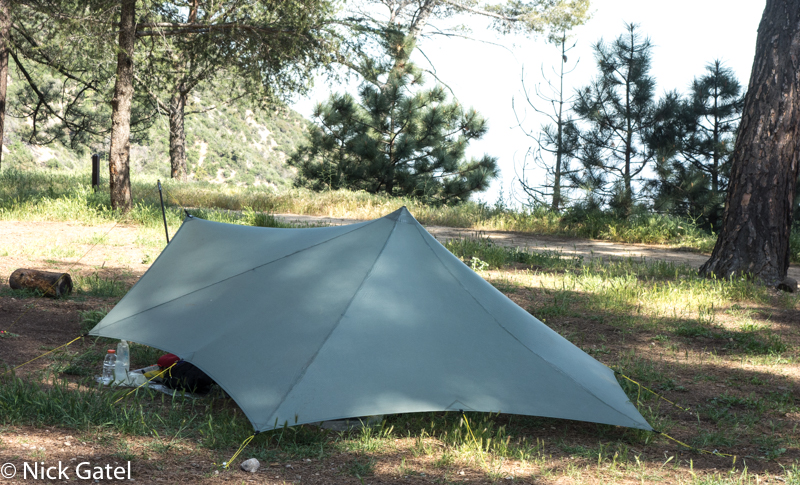
It’s been a little over a month since the last post here. I’ve been busy. Latest project was to finish and texture a bunch of new drywall then paint the living room and dining room. Whew! I needed a break. So the first weekend of May I hiked up into the San Gabriel Mountains to hang out with a group of backpackers for a couple days.
This apparently is a yearly get-together and I think this year was the 5th GGG gathering for the Southern California group. This was inspired by a Northern California group that has been gathering for the past 10 years. I wrote about it earlier this year when three friends and I spent four days backpacking before attending that GGG:
Back in 2009 a group of people who frequent the forums at backpackinglight.com started an annual get together they called the Gathering of the Gear Geeks (GGG). Apparently an ultralight backpacking gear-centric weekend affair, it was of no interest to me as gear is mostly boring. I equate it to a bunch of auto mechanics getting together to share their wrenches and sockets… something that never happens.
Over time, as the so-called ultralight gear became more main stream, it seemed the GGG was becoming more about diverse people getting together for a weekend with one common interest – backpacking. Re-winding to last year, my friend Craig suggested we ought to go up and meet some of these folks in person…
Whereas the No Cal gathering is large and loosely structured (contests and some group activities), the So Cal gathering is small, more intimate, and mostly just folks visiting with old friends and making new ones. Since I’m an old anti-social curmudgeon, the main reason I went to the So Cal affair was to hang out a bit with my friend, Craig. It’s been a while since we’ve done a trip together since he has a couple high school age kids, a job, and just finished graduate school a few weeks ago. I, on the other hand, live in an empty nest, don’t have a job, and have a lot of time available for camping and backpacking. Craig didn’t disappoint – see the picture at the top of the page.
Gear Geeks?
The original idea for the GGG was gear-centric: a gathering where people could share their latest, greatest, and lightest gear purchases. Folks could check out all kinds of backpacking stuff. Up north, the group does a “tour” of the campground and each tent owner does a “show and tell” about his or her shelter and answers questions. There are also contests such as how fast can you boil water with your stove. The contest is divided up into types of stoves.
My Backpacking Gear
My kit for this trip included old gear I’ve owned for decades. Many of today’s backpackers have a perception that gear from the ‘70s was really heavy, which isn’t the case. Plus it’s fun to share this stuff with the young’uns. So I thought I’ll share some of this with my readers.
Everything Weighs Something
The key to a light backpack is not hauling stuff you don’t need. On this trip I took some things I didn’t need and I’ll explain these later. The other discussion is how to weigh what you are carrying. Most backpackers today have a fixation on “base” weight: this is the weight of a pack without consumables. Consumables are water, food, fuel, etc. Base weight is really a dumb concept because what matters is the total weight of your back. So let’s take a look at my weights for this trip.
Total weight of my pack and contents was 20lbs, 10.13oz. If you think base weight is important, the base was 14lbs 2.53 ounces.
Bear Canister
Right off the bat, I was carrying an unnecessary 2+ pounds; a bear canister. For the uninitiated, a bear canister is required in certain areas where bears are a problem (stealing food). These canisters appeared in the ‘80s and are now required in areas of high use where bears are a problem such as Yosemite National Park.
high use areas = bear problems
So I generally avoid areas with lots of people. However, there are places I hike that require bear canisters for food storage. Depending on the length of a trip nowadays I take either a BearVault 450 or 500. I bought these a few years ago, but have never used them with my Kelty pack, so I decided to take the smaller one to see how it would work out with this pack.
BearVault 450
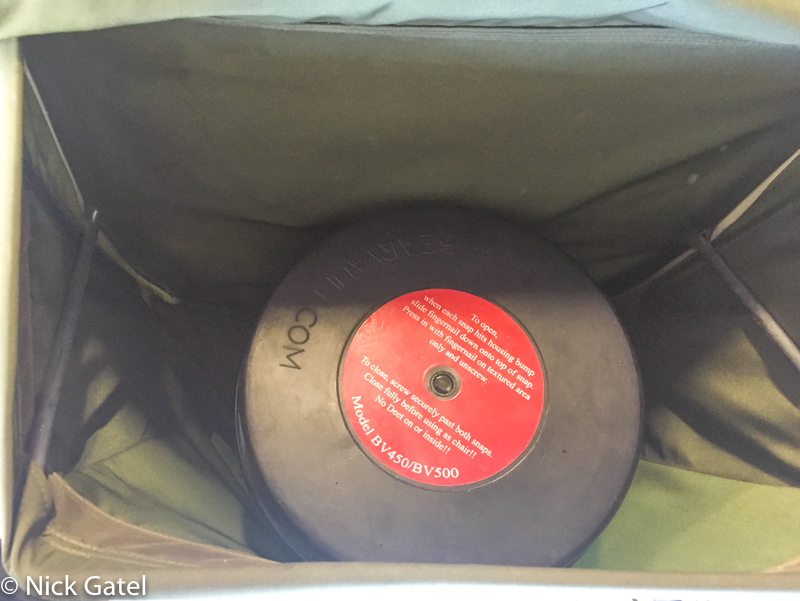
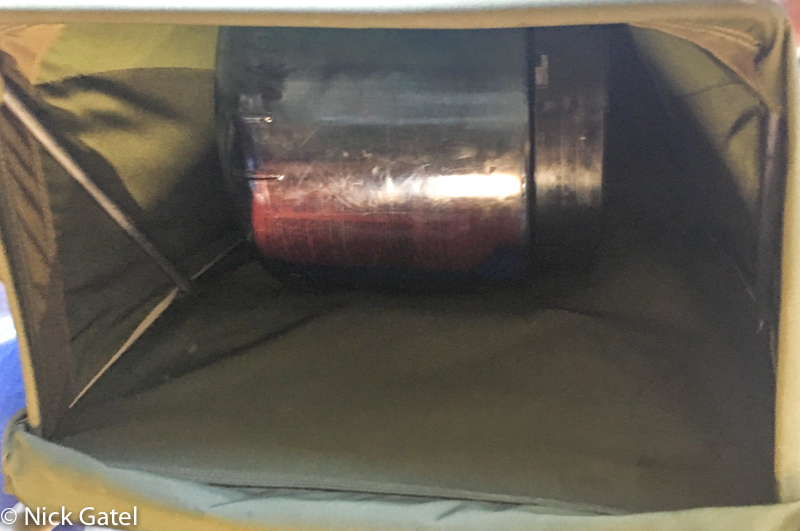
The canister worked out well and it makes a great camp chair too! As you can see, there is tons of room in the Kelty for the BV450. If you own a modern UL pack and have tried to squeeze a bear canister into it, you can see how convenient this old Kelty is.
BearVault 500
As a comparison, I loaded the larger BearVault in the pack.
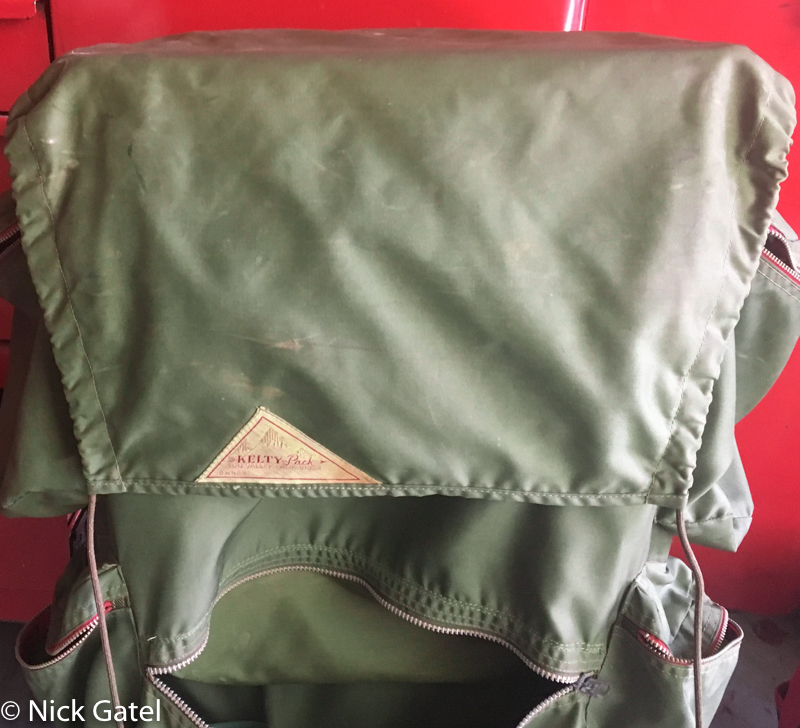
The larger BV500 also fits in the pack – perfectly. One cannot place it at the bottom of the pack. The pack frame keeps it snuggly at the top of the pack.
Garcia Bear Canister
Like the BV500, the Garcia will not slide to the bottom of the pack, but it does fit horizontally.
Bottom line, unlike most of the “ultra-light” backpacks today, the Kelty can handle just about any bear canister. The larger canisters like the BV500 and the Garcia will not fit vertically, but most folks prefer to pack a larger canister horizontally anyway.
How to Reduce Pack Weight
Obviously the first step, and the step that most folks can’t seem to grasp, is to remove everything you really don’t need. If you bring it just in case, you probably don’t need it and should leave it at home. Same goes for the so called luxury items. It’s the wilderness, remember? Map and compass excepted in most cases.
Aside from the cumulative weight of unneeded items, the best place to start is with the so-called Big 3: pack, shelter, sleep system. Below are the weights for my main three categories.
To see the weight of individual items, I have included a detailed list. (I use a spreadsheet as a gear check list and it conveniently calculates weights – see my post on How to Excel at Backpacking.
Backpack
I could reduce the pack weight a little by remove the metal stay that keeps the top of the pack open. I used to do that, but I like the stay. There are no extraneous straps to trim or other parts to remove, so the pack weighs what it weighs. I could get a lighter pack, and I have done that. Doing so is false economy and diminishing returns in my opinion. A pack is like the foundation of a house… it supports everything. You wear a pack all day and there are only two important considerations: does it fit well, and does it carry the load well transferring the load to your hips. The Kelty does. My McHale packs do it better. The smaller McHale Bump weighs a few ounces less than the Kelty and the larger McHale LBP36 weighs about 10 ounces more in its normal configuration. All the UL packs I have used don’t transfer weight to the hips at all or do it poorly.
So in this case there is no benefit for me getting a super light pack. Pack weight is okay.
Shelter
I didn’t need a shelter for this trip. Normally I just sleep under the stars unless the weather is bad. I brought my TrailStar because I have gotten a lot of questions about it since I wrote If I Could Only Have One Shelter it Would be a TrailStar. It isn’t a shelter that is seen very often and I figured it would be my contribution to the GGG.
Everything weighs just under 2lbs, which isn’t super heavy. My normal 3-season shelter is a Deschutes CF that weighs around 18 ounces with stakes and pole.
I should point out that on this trip I didn’t have a rain jacket. There was zero chance of precipitation. Until around 2011 I mostly used a poncho/tarp as a shelter and rain gear that was comparable to the Deschutes in weight, although not as much coverage or convenience as a shelter.
So for most trips today (and many years ago) I would have been about a pound lighter.
Sleep System
For 40 years or so I used the same down sleeping bag and an eight ounce blue foam pad. That set-up weighed about a pound more than what I use today. I’m 67 so a pillow and nice air mattress are standard operating equipment since about 2011, when I ditched the tiny foam pad I was using.
I do have a couple different NeoAir mattresses and quilts/sleeping bag for different temperatures. But for most trips, the above list is what I use. So there isn’t anywhere to comfortably reduce weight.
The Other Stuff in the List
The stove and compass I’ve been using for over 45 years. They work, don’t break, and I have great confidence in them. Sometimes I’ll take a super light alcohol stove set-up. See my thoughts on stoves.
Until 10 years ago I never took a camera. Most of my clothes are comparable to what I’ve been wearing for decades, although some items are a bit lighter.
Final Thoughts
About 10 years ago I built a spreadsheet as a check list and it does calculate weights. I always look at the total pack weight. Before the spreadsheet (for about 40 years) I simply weighed the pack with everything in it. For most 3-season trips my total pack weight was between 20-30lbs. Depending on the trip, I guesstimate that my “base weight” was usually between 12-14lbs.
Nowadays most of my trips are around 15-25lbs total pack weight depending on the length and weather. For example my last trip right after the GGG, my total pack weight was less than 14lbs. Base was less 8lbs.
So a couple take-aways:
- The old gear from the ’70s and ’80s wasn’t heavy.
- I’ve dropped on average 5lbs from the total pack weight since I started replacing my old traditional gear in 2008
5 lbs isn’t a lot of weight and it doesn’t make much difference on my trips. I could drop a couple pounds by getting one of the ultralight fragile backpacks… but I’ve done that and they are uncomfortable. Uncomfortable enough to make the trip less enjoyable and the dropped weight makes little difference in how fast or how long I can hike.

